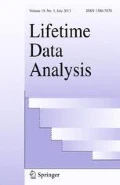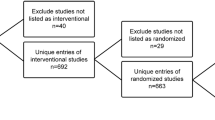Abstract
Time-to-event data in which failures are only assessed at discrete time points are common in many clinical trials. Examples include oncology studies where events are observed through periodic screenings such as radiographic scans. When the survival endpoint is acknowledged to be discrete, common methods for the analysis of observed failure times include the discrete hazard models (e.g., the discrete-time proportional hazards and the continuation ratio model) and the proportional odds model. In this manuscript, we consider estimation of a marginal treatment effect in discrete hazard models where the constant treatment effect assumption is violated. We demonstrate that the estimator resulting from these discrete hazard models is consistent for a parameter that depends on the underlying censoring distribution. An estimator that removes the dependence on the censoring mechanism is proposed and its asymptotic distribution is derived. Basing inference on the proposed estimator allows for statistical inference that is scientifically meaningful and reproducible. Simulation is used to assess the performance of the presented methodology in finite samples.
Similar content being viewed by others
References
Abbott Laboratories (2005) Oncologic drugs advisory committee: briefing document for atrasentan (XinlayTM). http://www.fda.gov/ohrms/dockets/ac/05/briefing/2005-4174B1_01_01-Abbott-Xinlay.pdf
Bennett S (1983) Analysis of survival data by the proportional odds model. Stat Med 2: 273–277
Berridge DM, Whitehead J (1991) Analysis of failure time data with ordinal categories of response. Stat Med 10: 1703–1710
Boyd AP, Kittelson JM, Gillen DL (2012) Estimation of treatment effect under non-proportional hazards and conditionally independent censoring. Stat Med. doi:10.1002/sim.5440
Breslow N (1974) Covariance analysis of censored survival data. Biometrics 30: 89–99
Cox DR (1972) Regression models and life-tables. J R Stat Soc B (Methodological) 34: 187–220
Efron B (1977) The efficiency of Cox’s likelihood function for censored data. J Am Stat Assoc 72: 557–565
Farewell V, Prentice R (1980) The approximation of partial likelihood with emphasis on case-control studies. Biometrika 67: 273
Gillen DL, Emerson S (2005) Information growth in a family of weighted logrank statistics under repeated analyses. Seq Anal 24: 1–22
Gillen DL, Emerson SS (2007) Nontransitivity in a class of weighted logrank statistics under nonproportional hazards. Stat Probab Lett 77: 123–130
ICH (2000) International conference on harmonisation—harmonised tripartite guideline: choice of control group and related issues in clinical trials, (E10), 22–24
Irwin J (1949) The standard error of an estimate of expectational life. J Hyg 47: 188–189
Kalbfleisch J, Prentice R (2002) The statistical analysis of failure time data. Wiley Series in Probability and Statistics
Kalbfleisch JD, Lawless J (1991) Regression models for right truncated data with applications to AIDS incubation times and reporting lags. Statistica Sinica 1: 19–32
Karrison T (1987) Restricted mean life with adjustment for covariates. J Am Stat Assoc 82: 1169–1176
Klein J, Moeschberger M (2003) Survival analysis: techniques for censored and truncated data. Springer,
Liang KY, Zeger SL (1986) Longitudinal data analysis using generalized linear models. Biometrika 73: 13–22
Prentice RL, Gloeckler LA (1978) Regression analysis of grouped survival data with application to breast cancer data. Biometrics 34: 57–67
Robins JM, Rotnitzky A (1992) Recovery of information and adjustment for dependent censoring using surrogate markers. In: Jewell N, Dietz K, Farewell V (eds) AIDS epidemiology—methodological issues
Singer JD, Willett JB (1993) Its about time: Using discrete-time survival analysis to study duration and the timing of events. J Educ Behav Stat 18: 155–195
Struthers CA, Kalbfleisch JD (1986) Misspecified proportional hazard models. Biometrika 73: 363–369
Tsiatis AA (1982) Repeated significance testing for a general class of statistics used in censored survival analysis. J Am Stat Assoc 77: 855–861
Xu R, O’Quigley J (2000) Estimating average regression effect under non-proportional hazards. Biostatistics 1: 423–439
Author information
Authors and Affiliations
Corresponding author
Rights and permissions
About this article
Cite this article
Nguyen, V.Q., Gillen, D.L. Robust inference in discrete hazard models for randomized clinical trials. Lifetime Data Anal 18, 446–469 (2012). https://doi.org/10.1007/s10985-012-9224-6
Received:
Accepted:
Published:
Issue Date:
DOI: https://doi.org/10.1007/s10985-012-9224-6




